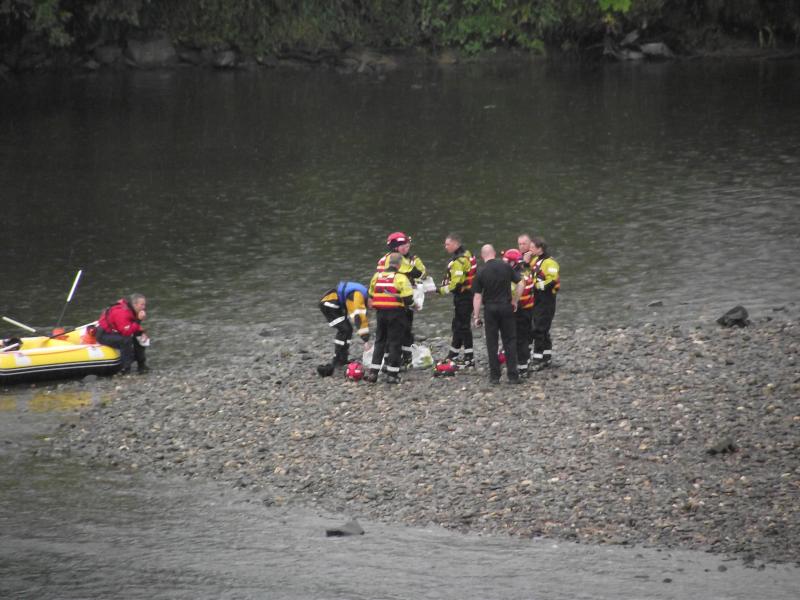Canada News
Studies suggest new Canadians don’t know how to swim compared to those born here

File Photo: The girl died Sunday after falling into the Magog River in Sherbrooke, east of Montreal. (Photo by Ninian Reid/Flickr, CC BY 2.0)
MONTREAL — The recent drowning of an eight-year-old Syrian refugee in Quebec has highlighted the findings of two studies which indicate new arrivals in the country are more at risk of drowning than people born in Canada.
The girl died Sunday after falling into the Magog River in Sherbrooke, east of Montreal.
Local Muslim officials say her family had moved to the town about two years ago looking for stability.
Sherbrooke La Tribune reported the girl was with her two brothers and two friends when she apparently slipped and fell into the river.
The local Muslim community has begun a fundraising campaign to help cover burial costs and allow the family to get back on its feet. The girl was buried in an Islamic cemetery in Laval on Monday.
A 2010 study done for the Lifesaving Society concluded that new Canadians — particularly those who have lived in the country for less than five years — are at a higher risk of drowning when boating or swimming than people born here.
The Ipsos Reid Public Affairs study examined the influence of ethnicity on attitudes and behaviours when it came to water safety.
It revealed that almost one-third of new Canadians are nervous around water and half of new Canadian parents fear their children may drown.
Raynald Hawkins, director of the Quebec Lifesaving Society, suggests recent drowning victims in the province may have been new Canadians.
“If we look at the names of the families of the last victims we’ve had this year in Quebec, we quickly notice that they certainly are new Canadians who have only established themselves in Quebec for a few months or a few years,” he said in an interview Tuesday.
A six-year-old boy whose family had just arrived from Nigeria, via the United States, drowned in a Montreal swimming pool in early July.
Hawkins encourages new arrivals to enrol in the society’s “Swim to Survive” program, which is offered in elementary schools. It provides the minimum skills needed to survive an unexpected fall into deep water.
“If we want to save the largest number of children in Quebec and Canada, it’s through schools because it’s not necessarily true that new Canadians take part in day camps that are organized during the summer in different municipalities,” he said.
Hawkins said about 20 per cent of new Canadians don’t have any swimming skills, while for those born here the figure is less than five per cent.
Another 2016 study focused on children between the ages 11 and 14 who are new to Canada. It concluded they are five times more likely to be unable to swim than their Canadian-born classmates.
Results suggest that the risk is higher for new Canadians in their teens than those born in Canada — and even more so for those who have been here for less than five years.
The research showed that new Canadians face a number of challenges when it comes to learning how to swim. They include cultural and religious challenges as well as time constraints and day-to-day life struggles.
“A lot of times new Canadians don’t have swimming pools where they lived, but when they arrive in Canada, there are a lot of pools as well as accessibility to rivers and lakes,” Hawkins said.
“And, for many reasons, they don’t take swimming lessons where they come from so that’s why we estimate they have a high risk (of drowning).”





















